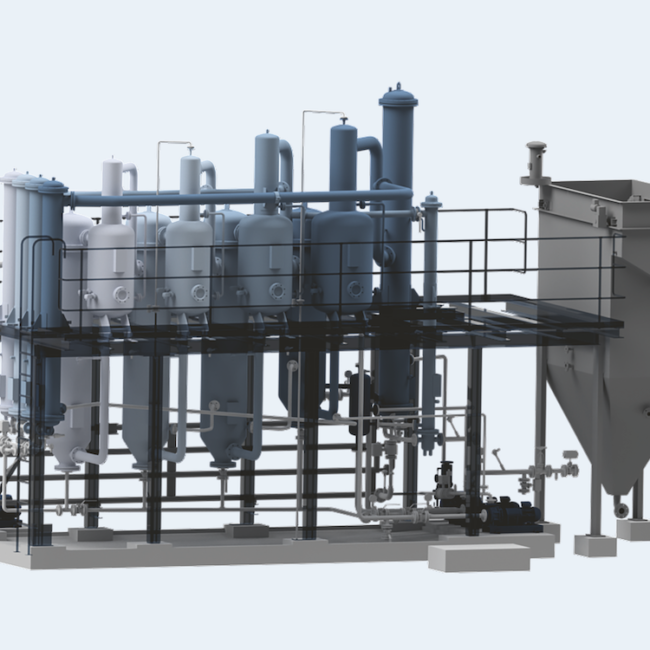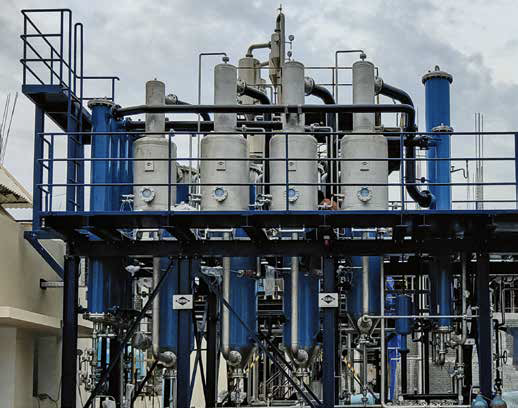For Mercerizing Lye
ADVANTAGES OF CRP
Environmentally friendly: fewer chemicals required for neutralisation
Product Outline
During mercerisation, the diluted caustic soda (weak lye) from the stabilisation section is usually drained off. Körting has found a way of recovering this diluted caustic soda by evaporating water.
As shown in the graphic, the caustic recovery plant (CRP) separates the weak lye (washing liquid) into strong lye and vapour condensate. The strong lye (recovered lye) can be reused in the mercerising machine.
Depending on the quality of the fabrics, further cleaning of the lye with hydrogen peroxide might be advisable (see page 6). The vapour condensate is slightly alkaline completely soft water. Its temperature is approximately 90°C. It can be used for cleaning, for instance, in the mercerising or bleaching machine, or in other types of pre-treatment systems.
Körting Hannover has been on the market longer than any other manufacturers in this field and is the global market leader of CRP. Since 1956 Koerting is producing caustic recovery plants (CRP) equipped with industry leading technology globally.
This consists of a custom-developed mixing-and-dosing-ejector, peroxide storage tank and lye cooler. Thedosing system has no moving parts, which means zero maintenance.
The settling tank allows unhindered separation of lye and dirt. The tank is designed so that floating sludge and sludge on the bottom are easy to remove.
.
The automatic scraper ensures consistent removal of the floating sludge before it sinks back into the recovered lye.





